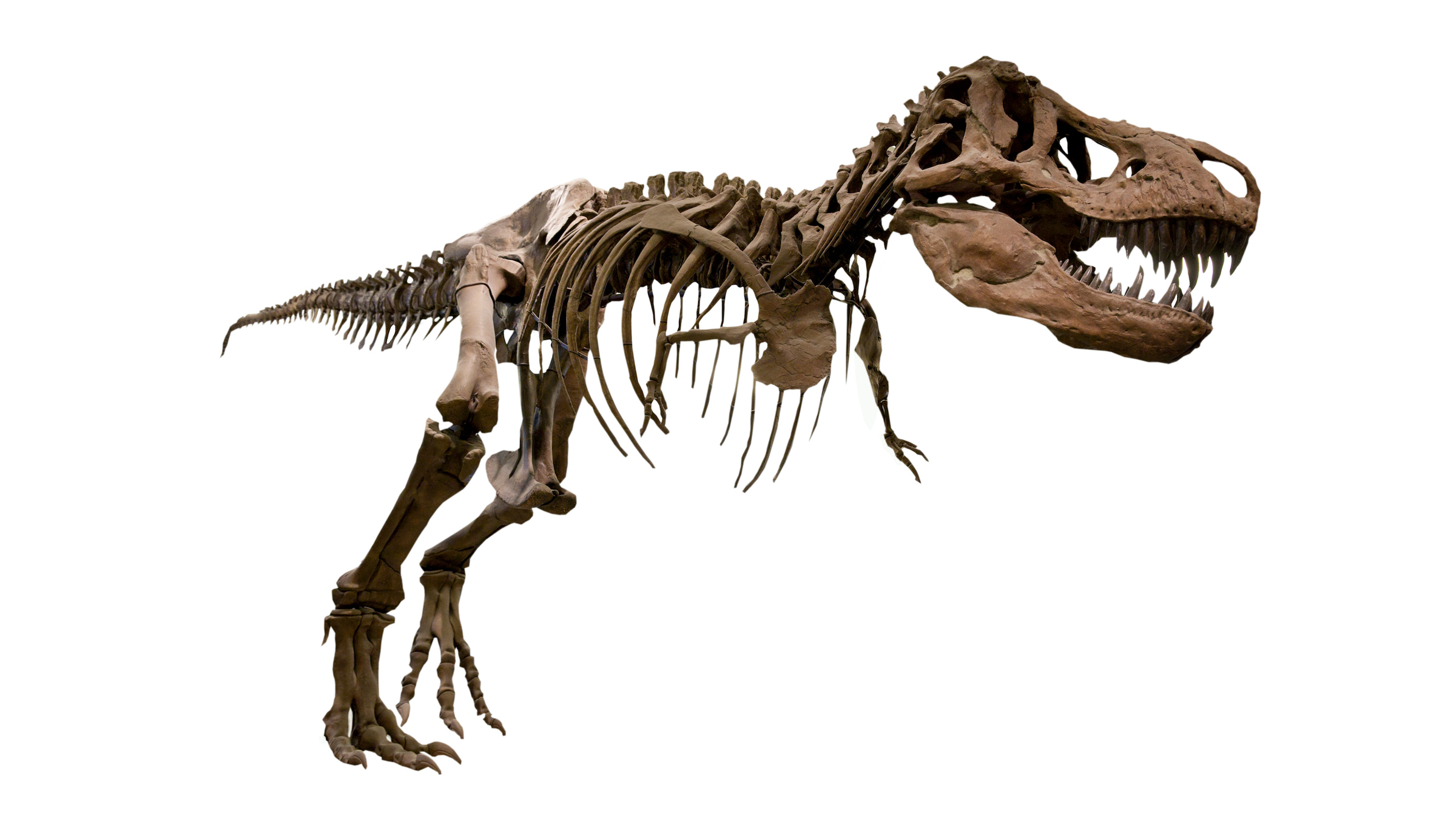Skull of 'armless' meat-eating dinosaur discovered
It likely used its head and jaws to take down prey.
Paleontologists in Argentina have uncovered an unusual dinosaur skull that belonged to an "armless," tiny-brained carnivore that lived about 70 million years ago, a new study finds.
The newfound species — named Guemesia ochoai for General Martín Miguel de Güemes, a hero of the Argentine War of Independence — is a member of Abelisauridae, a clade of carnivores that roamed what is now South America, Africa and India during the dinosaur age.
It's possible that G. ochoai is a close relative of the ancestors of abelisaurids, the researchers said. However, G. ochoai is different from its abelisaurid relatives in two key ways: It lacks horns, perhaps because abelisaurid ancestors hadn't evolved these pointy skewers yet; and it likely lived in what is now northern Argentina where its skull was found, far away from most abelisaurid remains in Patagonia, southern Argentina, suggesting that this dinosaur group could live in varied ecosystems.
"This new dinosaur is quite unusual for its kind," study co-author Anjali Goswami, a research leader at the Natural History Museum in London, said in a statement. "It shows that the dinosaurs that live in this region were quite different from those in other parts of Argentina, supporting the idea of distinct provinces in the Cretaceous of South America."
Related: Image gallery: Tiny-armed dinosaurs
Abelisaurids likely preyed on long-necked titanosaurs, an impressive feat given that their tiny arms were vestigial and essentially useless. They weren't the only theropod — or bipedal, mostly meat-eating dinosaurs — with short arms. Tyrannosaurus rex has embarrassingly short arms for its stature, although its arms were longer than those of abelisaurids and unpublished research suggests that the dinosaur king could use its wee arms to bring prey in close.
With such puny arms, abelisaurids had to take down prey almost entirely with their skulls and fearsome jaws.
Get the world’s most fascinating discoveries delivered straight to your inbox.
The skull is all that's left of this G. ochoai individual. So, after researchers uncovered it in the Los Blanquitos Formation near Amblayo, they got to work studying it. The team analyzed the dinosaur's well-preserved braincase, or the area where the brain sat. Like other abelisaurids, G. ochoai's braincase was small, indicating that it had a little brain. In fact, its entire cranium is about 70% smaller than its abelisaurid relatives, suggesting that this individual was a juvenile, although this matter is not yet settled.
The research team of Argentine and U.K. scientists also noticed a unique feature called foramina, or rows of small holes at the front of the skull. These holes could have helped G. ochoai cool down when the animal pumped blood into the thin skin at the front of its head, where it could release heat, the researchers said.
There are already 35 other abelisaurid species described from Argentina, but nearly all of them are from Patagonia. The discovery of G. ochoai and other extraordinary paleo-species, such as a huge turtle with a 3-foot-long (1 meter) shell, in this northern region suggest that it was a unique part of the world during the late Cretaceous.
Researchers hope to discover more specimens of G. ochoai and its relatives so they can learn more about life in ancient Argentina. The study was published online Feb. 10 in the Journal of Vertebrate Paleontology.
Originally published on Live Science.

Laura is the managing editor at Live Science. She also runs the archaeology section and the Life's Little Mysteries series. Her work has appeared in The New York Times, Scholastic, Popular Science and Spectrum, a site on autism research. She has won multiple awards from the Society of Professional Journalists and the Washington Newspaper Publishers Association for her reporting at a weekly newspaper near Seattle. Laura holds a bachelor's degree in English literature and psychology from Washington University in St. Louis and a master's degree in science writing from NYU.




